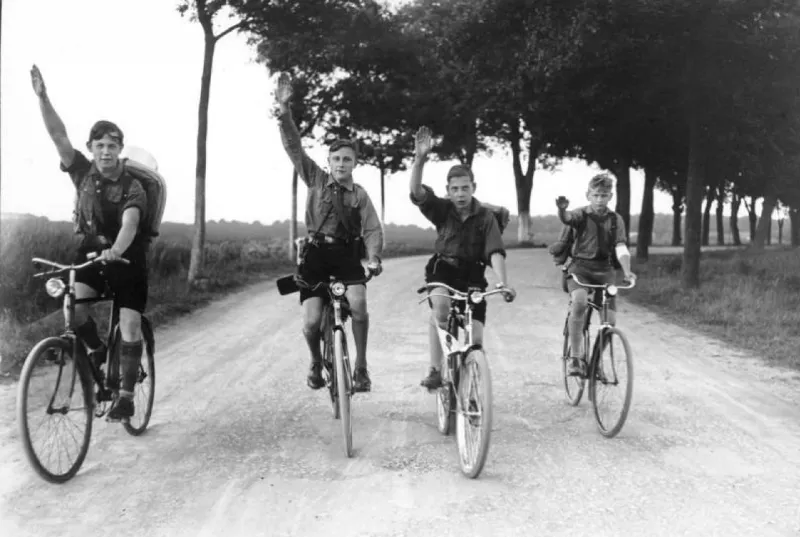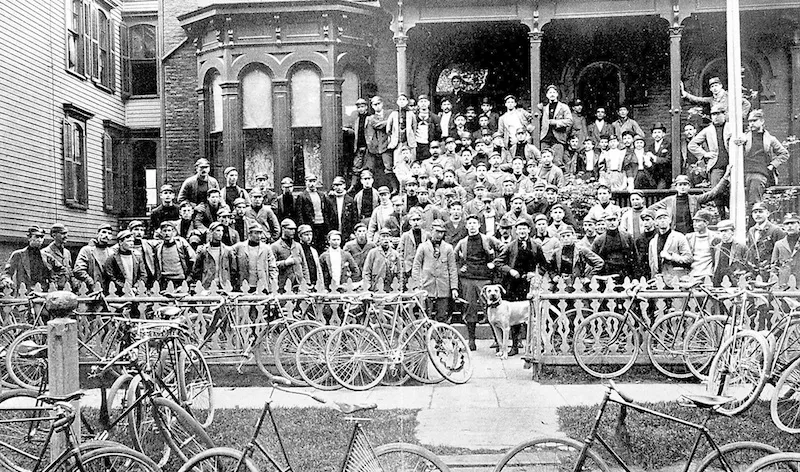During her 6 years (2007-2013) as Commissioner of New York’s Department of Transportation, Janette Sadik-Khan partially restored 317 linear miles of 19th-century streets so they could be used for a similar kind of non-motorized mode (cycling) to the mode for which they were laid out (horse-drawn transportation). 317 sounds like a lot.
Like a revolution, coupled with statistics showing declines in total miles driven and total numbers of young people driving, we get a sense from a number like 317 that we’ll look around next and see old industrial cities have become productive again, producing freshly roasted coffee, veggies, and herbs on all of the rooftops and lean Arian gods strengthened by pedaling.

Consider this, though, how during Sadik-Khan’s 6 years making New York more liveable, China built 100 cities with wider streets than Detroit’s and 12,000 miles of expressways. Lower Manhattan and Brooklyn, along with Copenhagen, Paris, Seville, and a raft of old cities that have swapped car lanes for bike lanes in their historic town centers, look like village restoration projects compared to what has been happening with the urbanization of greenfields and brownfields all over the world.
New York may contain a message of hope, but it’s not getting through to those authorities who are redeveloping former industrial land in the first world or building new cities from scratch in the second and third worlds. We can’t blame Janette Sadik-Khan for all that. The world, only a mayor, didn’t employ her.
For one thing, mayors only love people on bikes. While car lovers defect to malls in those neighboring local government areas that suck the lifeblood from cities laid out before cars, cyclists provide hope that narrow streets with less parking will not be completely abandoned. State politicians love cyclists because they don’t put such a burden, in their old age, on the hospitals they have to fund.
Federal politicians love cyclists when they have trouble supplying oil for the drivers. Bikes have been loved for not cluttering trains, for not producing emissions, and for causing less wear on the asphalt. The problem with these small-fry agendas, helpful though they may be, is they obscure our view of a huge, missed opportunity. All our new cities could be built around cycling, and be far more efficient.
For argument’s sake, imagine an area the size of Manhattan that has been entirely roofed over to create a gigantic sequence of open-air halls. Popping out from those roofs might be all kinds of towers or slab blocks, and the top of those roofs might be used as platforms for recreation and food production.
Now picture yourself down on the ground. Instead of cars, you see bikes. Instead of trucks, you see cargo bikes. I’m asking you to imagine a city where we don’t pool our money to resurface roads because we trundle along in heavy machines that have their own roofs but to picture a city where weather protection is a public resource. The surface we roll on is smooth, dry, frictionless, and designed and engineered to optimize cycling.
Despite our ability today to roof over gigantic spaces, an idea like the one I’ve just mentioned might have been easier to imagine in the early 1900s than it is 100 years later. All-weather asphalt and its sibling, the pneumatic tire, were still in their infancy then. Meanwhile, shop awnings were inching nearer to the center of the street from each side, their builders emboldened by images of the future hinted at by grand shopping galleries and arcades being built throughout Europe. Underground cities with polished floors were on the way in, not on the way out.

The early 1900s was also the beginning of a period of mental agility about city design that nowadays seems to be lacking. Sadik-Khan has said the design of city streets remains in a state of paralysis since their last major reengineering in the late 1960s. There was no such paralysis at the beginning of the twentieth century. With horse-drawn transportation being phased out and a myriad of transport machines being invented, conditions were ripe for Antonio Sant’Elia in Italy and Harvey Wiley Corbett in America to lead a generation of architects in imagining cities with varying modes on every layer, ranging from electrified trams to motorized vehicles, to the aircraft overhead.
Sadik-Khan’s work in New York indicates a similar historical moment approaching. Car share is growing at the expense of car ownership. Driverless taxis are on the horizon. American billionaire Elon Musk proposes supersonic travel in vacuum tubes between American cities. Our overwhelming sense is that private car ownership, the foundational principle of city planning for the past fifty years, is heading the way of the horse.
Even if infinite energy can be found to keep us all driving, it is becoming increasingly apparent that cocooning ourselves in weather-protected machines is fundamentally at odds with our motives for living in cities. Cars are also at odds with our dire need to find time for exercise every day; in this age, the non-physical nature of work is causing many of us to die prematurely of chronic disease.
I’m sure, as I write, executives from Google are winning and dining politicians, just like Henry Ford, convincing their streets should be given to driverless cars. They can promise that capacities will be increased, that blind people will be able to drive, and we will all be able to work at a desk while we are commuting. Let’s just stop and remember two things: 1. how Google will lie to make lots of money, and 2. how, if we use our imaginations, we can surely come up with something much better!

The end of the era of private car ownership occasions a genuine rethink of urban mobility and ways in which urban design has historically been used to optimize optimal modes. When trading vessels brought us great riches, we built canal cities like Amsterdam and Venice. When exchanging finance and thoughts was the aim, we built compact cities to shorten walking distances within various quarters, quarters for bankers, quarters for artisans, quarters for tailors, etc.
Walking within quarters is not enough in an era of extreme vocational and educational specialization. Each of us benefits by having access across whole cities of many millions of people. We can rush headlong into achieving that using fast trains and driverless cars, or we can pause and look for opportunities to make greater societal gains on the way.

The bicycle is too beguilingly simple a machine. Surely only a Luddite or masochist could imagine a city of tomorrow would revolve around an antique assembly of pedals, steel tubing, and spokes. We can’t even assume Janette Sadik-Khan is convinced, having built cycle tracks using moveable planters and paint. Her 317 miles could all be swept aside at Google’s behest on the weekend.

The book I’m writing at the moment (and this blog post is the first draft of an introductory section) will argue that a purpose-built city for cycling would, as we say in Australia, “shit all over,” a city designed around driverless cars. The trick is to think about city design with a flexibility of mind that seems to have been lost since the nineteen twenties and thirties.

